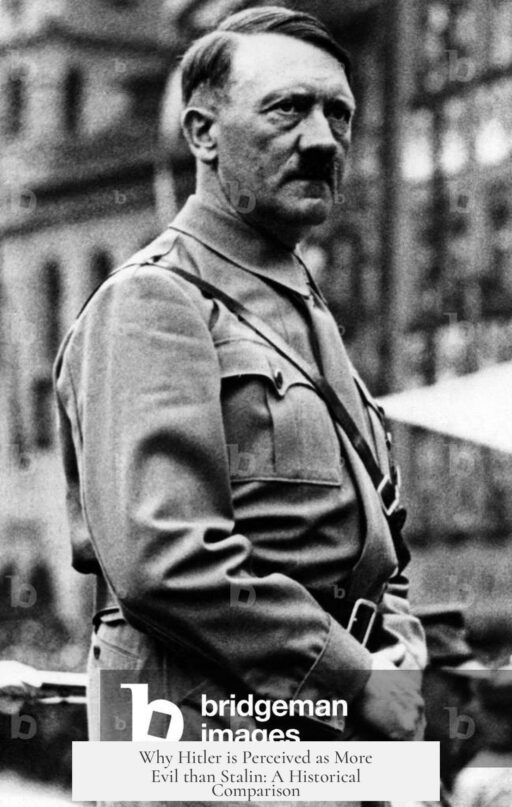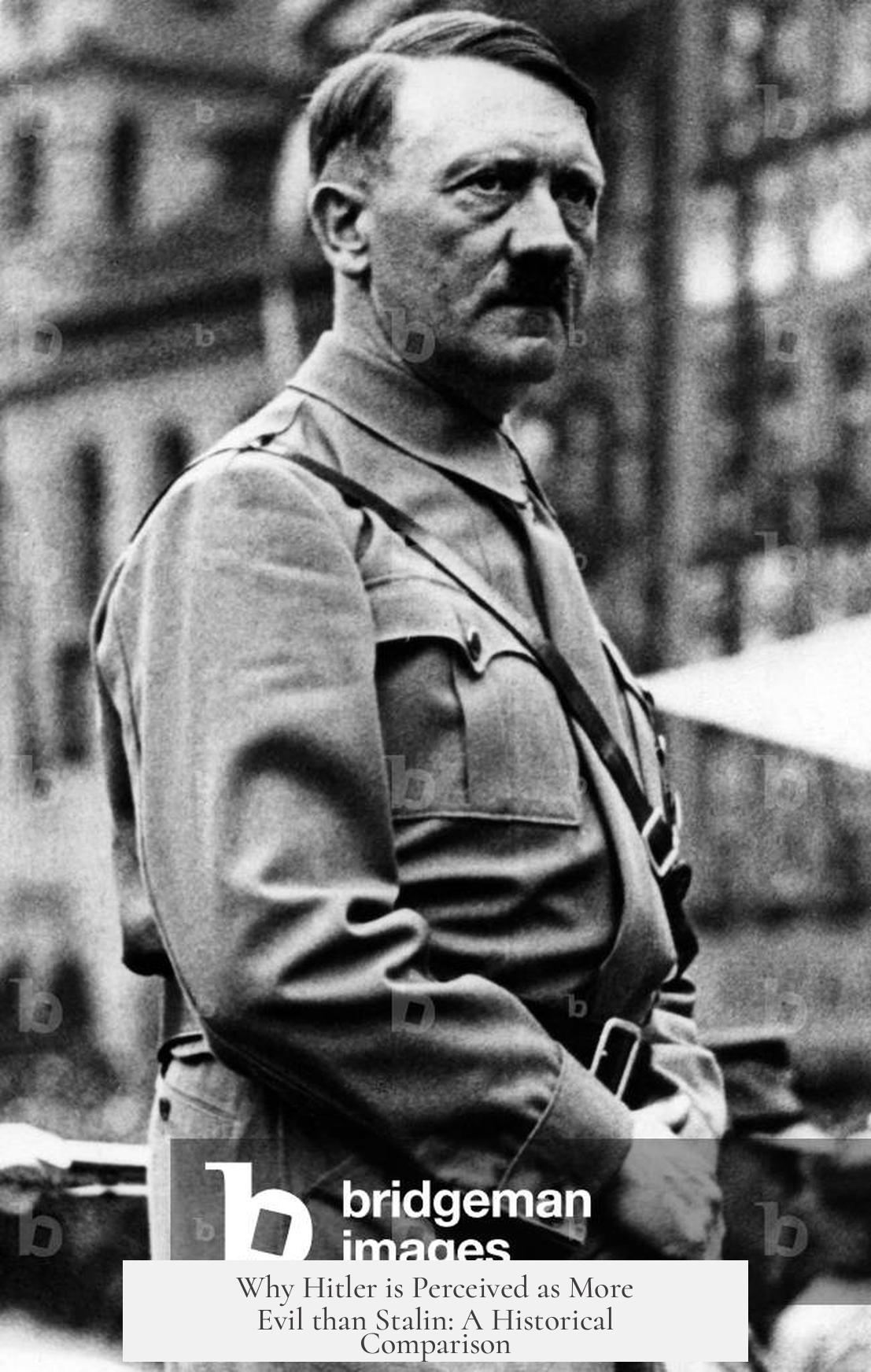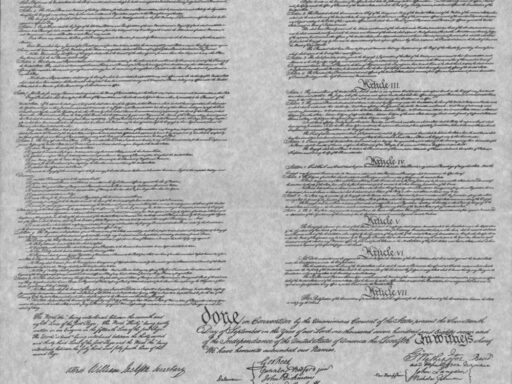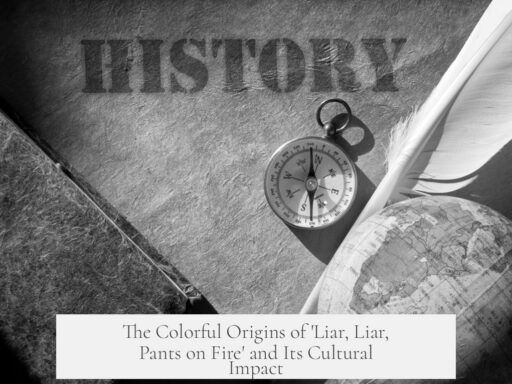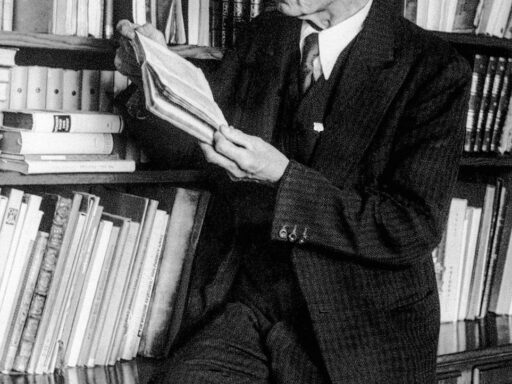Hitler is seen as more evil than Stalin primarily due to the intentional nature of his genocidal policies, thorough documentation of his atrocities, specific targeting of marginalized groups, and his role as the central enemy in World War II, especially within Western consciousness. These factors shape the broader perception of their legacies despite both leaders causing immense human suffering.
Hitler’s regime systematically orchestrated the Holocaust, which resulted in the deliberate murder of approximately six million Jews, along with millions of Romani people, homosexuals, disabled individuals, and political opponents. His genocidal intent was explicit and central to his ideology. Nazi leaders actively planned extermination methods, including the use of gas chambers, to murder entire populations efficiently. This level of premeditated killing, targeting specifically dehumanized groups categorized as “undesirable,” sets Hitler apart from Stalin.
In contrast, Stalin’s killings were often a consequence of policies motivated more by political control, paranoia, and rapid industrialization. While Stalin was responsible for millions of deaths through purges, forced famines, labor camps (gulags), and executions, many of these deaths occurred as indirect results of harsh policies, though with culpable indifference. He did not pursue ethnic extermination in a racial purity sense. Stalin killed to consolidate power and enforce authoritarian control, not primarily to destroy specific ethnic or social groups.
The nature of record-keeping also influences perceptions. Hitler’s regime kept detailed documents and records, many of which were preserved after the war. The discovery of Nazi concentration camps exposed the scale and bureaucracy of systemic murder directly to the Allied forces and the wider world. Conversely, Stalin’s Soviet regime kept strict secrecy around gulags and purges. The lack of direct Western access or firsthand observation of Soviet atrocities during Stalin’s rule resulted in limited knowledge and acknowledgment during and shortly after his lifetime.
Allied wartime dynamics further explain this difference. The Soviet Union was a crucial ally against Nazi Germany in World War II. This alliance influenced Western attitudes, with Stalin portrayed as a wartime ally rather than a primary enemy. Western media and historical narratives focused more on Nazi atrocities than on Soviet crimes. The fact that Stalin maintained nuclear power and political influence after the war also discouraged open criticism in the West.
Hitler’s opaque and aggressive racist ideology—rooted in eugenics, anti-Semitism, and nationalist “Aryan” supremacy—has been completely discredited. Stalin’s communist ideology, despite its authoritarian failings, remains subject to debate regarding its critique of capitalism and social justice goals. This ideological distinction contributes to how history judges each dictator’s legacy.
Regional perspectives further diverge. Western countries, which bore the brunt of Nazi aggression and occupation, emphasize Hitler’s evils. Eastern European countries, having experienced both Nazi invasion and Soviet domination, often hold grievances against Stalin’s legacy as harsh or worse. However, Western popular culture and education emphasize Hitler as the archetype of evil.
| Factor | Hitler | Stalin |
|---|---|---|
| Intent | Willful genocide with industrialized killing methods targeting specific ethnic groups | Political repression, purges, famine; deaths often indirect but massive |
| Documentation | Detailed records and Nazi bureaucracy exposed post-war | Secrecy; limited access to archives and camps during lifetime |
| Target Groups | Jews, Romani, homosexuals, disabled, political enemies | Opponents within Communist Party, peasants, perceived enemies regardless of ethnicity |
| War Status | Enemy of Allies; defeated in war; camps liberated on Allied soil | Ally to Western nations in WWII; remained powerful after war |
| Ideological Legacy | Totally discredited fascism associated with racism and genocide | Communism remains debated despite authoritarian methods |
Estimates of deaths also influence perception. While Stalin’s death toll is enormous—likely between 15 and 20 million from policies including forced famines and purges—Hitler’s overall death toll when considering World War II civilian and military deaths may exceed this, often cited at around 45 million. Hitler’s failure in war prevented potentially even larger genocides, particularly in Slavic populations had Nazi Germany succeeded.
Western media and education have consistently demonized Hitler since World War II. The vivid images of concentration camp horrors and Nazi brutality remain powerful symbols of evil. The Soviet atrocities, hidden behind the Iron Curtain and the Cold War politics, did not receive comparable exposure until decades later. This disparity continues to shape global memory.
Ultimately, Hitler’s direct, systematic, and ideologically driven genocide, combined with the post-war Allied narrative and the openness of historical record, position him as the more overtly evil figure in global consciousness compared to Stalin’s brutal but more politically motivated atrocities.
- Hitler’s intentional genocide aimed to exterminate entire ethnic and social groups.
- Stalin’s killings resulted largely from political repression and ruthless policies.
- Detailed Nazi records and Allied exposure revealed Hitler’s crimes globally.
- Stalin’s crimes were concealed by secrecy and Cold War political alliances.
- Allied defeat of Nazi Germany elevated Hitler’s image as the ultimate villain.
Why is Hitler Seen as More Evil than Stalin?
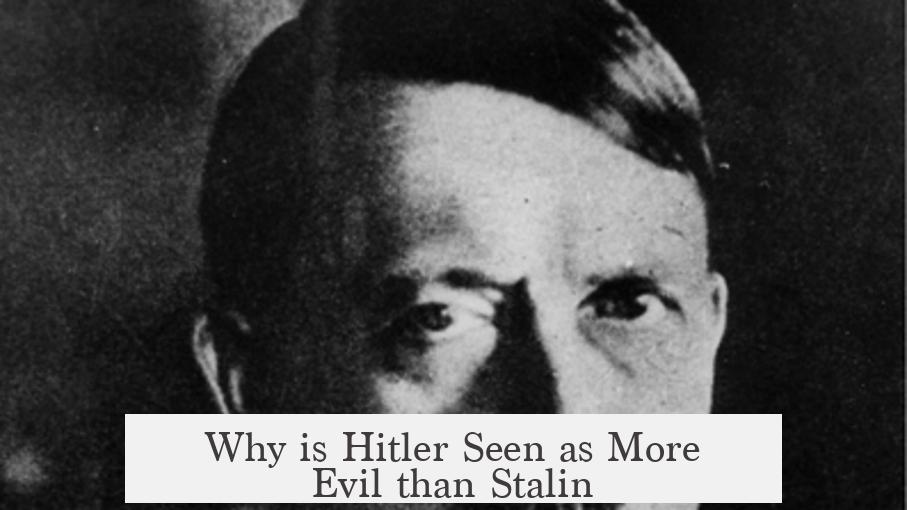
The short answer: Hitler is often seen as more evil than Stalin because of clearer documentation, the intentional nature of his genocides, the specificity of his targets, Allied perspectives during and after WWII, and how his ideology has been discredited in contrast to communism’s ongoing debate. Now, let’s unpack that carefully and without the usual clichés.
Why does the general public often lump Hitler into the “most evil person ever” slot, while Stalin, despite causing perhaps even more deaths, gets slightly less demonization? The reasons are complex and intertwined with history, ideology, politics, and even media portrayal.
Clear Records, Clearer Horror
One big reason is documentation and awareness. Hitler kept detailed records of his genocide. Concentration camps, transport manifests, cold systematic protocols—all these have survived. When the Allies defeated Nazi Germany, they walked into those camps and saw firsthand the unspeakable atrocities. These images and reports flooded Western media immediately after the war.
Contrast that with Stalin’s regime. His Soviet Union kept a tight lid on the brutalities happening within its borders. No American or Western journalist toured the Soviet gulags during Stalin’s reign because such access was denied. The Soviet government carefully controlled information. Even today, Russia rarely fully acknowledges Stalin’s crimes.
This means many outside the Soviet sphere lacked vivid, direct exposure to communist crimes, making them less tangible to the Western psyche. Without images and detailed records, evils become blurry, less immediate, less personal.
Intentionality vs. Indifference
Hitler’s killings are chilling because they scream of direct, intentional evil. His middle managers sat down and debated the best way to murder millions. The Nazis devoted resources to industrial-scale extermination of Jews, Roma, homosexuals, and mentally disabled people. Killing was the goal, not a byproduct.
Stalin’s kill count, while staggering, came largely from policies that caused starvation, political purges, forced labor, and war. He enacted brutal policies, but arguably didn’t always intend death as the primary goal. There was a terrible indifference—millions died from famine or labor exploitation—but it was more “collateral damage” rather than targeted extermination.
An example: Hitler wanted to kill Jews because of racist ideology. Stalin killed anyone who opposed his grip on power—ethnicity and race didn’t always factor. Both horrific, but different flavors of evil.
Targeting Specific Groups Creates Clear Villains

Hitler’s genocide had a clear target: entire races and groups defined as “undesirable.” Jews, homosexuals, Roma, communists, and disabled people. He sought to exterminate entire peoples. That deliberate targeting makes the evil crystal clear.
Stalin, by contrast, pursued purges that crossed ethnic and social lines—hundreds of thousands or millions perished across different groups, not always for ethnic hatred but political loyalty or even suspicion. Sure, horrific, but less straightforward evil, more broad ruthlessness.
Adding to this horror was Hitler’s obsession with eugenics, Aryan breeding programs, and gruesome medical experiments. This twisted pseudo-scientific approach lends a uniquely chilling dimension to his atrocities—there’s no equal in Stalin’s regime. Industrialized murder, carefully planned and intentionally mechanized, is uniquely modern and terrifying.
The Allied Perspective and Historical Context
During WWII, Stalin was an ally against Hitler. The US, UK, and other Allied powers depended heavily on the Soviet military to defeat Nazi Germany. This alliance meant that Western narratives had to tread lightly criticizing Stalin while his image was politically useful. The iconic photos of Stalin alongside Roosevelt and Churchill cemented his stature.
Also, the West fought directly on Nazi-occupied soil and suffered under Hitler’s blitzkrieg. Millions in Western Europe experienced the Nazis’ terror firsthand. The Soviet Union, meanwhile, was behind the Iron Curtain after the war and less accessible to western eyes.
Plus, Hitler lost the war and his regime collapsed amid total defeat on German soil. Allies could openly expose and condemn him without fear. Stalin kept nuclear weapons and maintained a strong grip on Eastern Europe, so open condemnation risked international tension during the Cold War era.
Numbers and Interpretations: Death Toll Comparisons
One might think that the sheer scale of deaths under Stalin would earn him more notoriety. But the numbers are tricky. Estimates say Stalin caused 15–20 million deaths from 1929 to 1953, factoring in famine deaths linked to his policies. Hitler’s death toll, counting the Holocaust and wartime civilian deaths, reaches about 45 million.
Why the disparity in perception? Many death counts under Stalin include famine and indirect deaths, while Hitler’s numbers often focus on the direct killing like the Holocaust, which is more personal and targeted. Also, Hitler lost, limiting his ability to continue or expand killings.
If Hitler had won or the war dragged on, his genocidal plans might have wiped out entire populations, like Slavic people. Some historians argue the difference in death tolls might have been far less if Hitler had not been defeated.
Ideology Matters
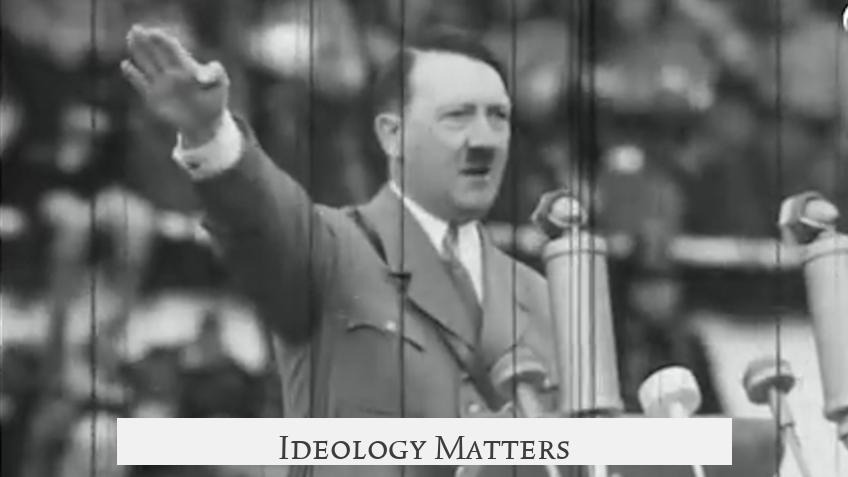
Hitler’s ideology is utterly discredited today. Nazi racism and Aryan supremacy are rightly condemned as pseudoscientific fantasy and moral horror. This makes it easier to universally reject Hitler as pure evil.
Stalin’s communist ideology, on the other hand, still sparks debate. Its critique of capitalism and claim to social justice have appeal for some, muddying the waters of moral judgment. Some interpret Stalin’s rise as a power struggle corrupted by ambition, not a pure ideology of hate like Hitler’s.
Different Lenses: Western and Eastern Perspectives
People’s views of Stalin and Hitler often depend on their location and historical experience. Westerners mostly fought the Nazis directly and experienced occupation. For them, Hitler is the immediate evil.
In Eastern Europe, the view can be quite different. Soviet domination after the war brought repression and suffered immensely under Stalinist policies. For many Eastern Europeans, Stalin’s shadow is darker, and he represents oppression more than Hitler now.
The Role of Modern Discourse and Media
In recent decades, political discourse in the US has frequently used “fascism” and Hitler comparisons to criticize politicians. This keeps Hitler’s name fresh in public consciousness as the ultimate villain. Stalinist comparisons are rarer.
Media focus on Hitler’s atrocities ensures more cultural awareness, reinforcing the idea he is the “face of evil.”
So, Is Hitler Truly More Evil?
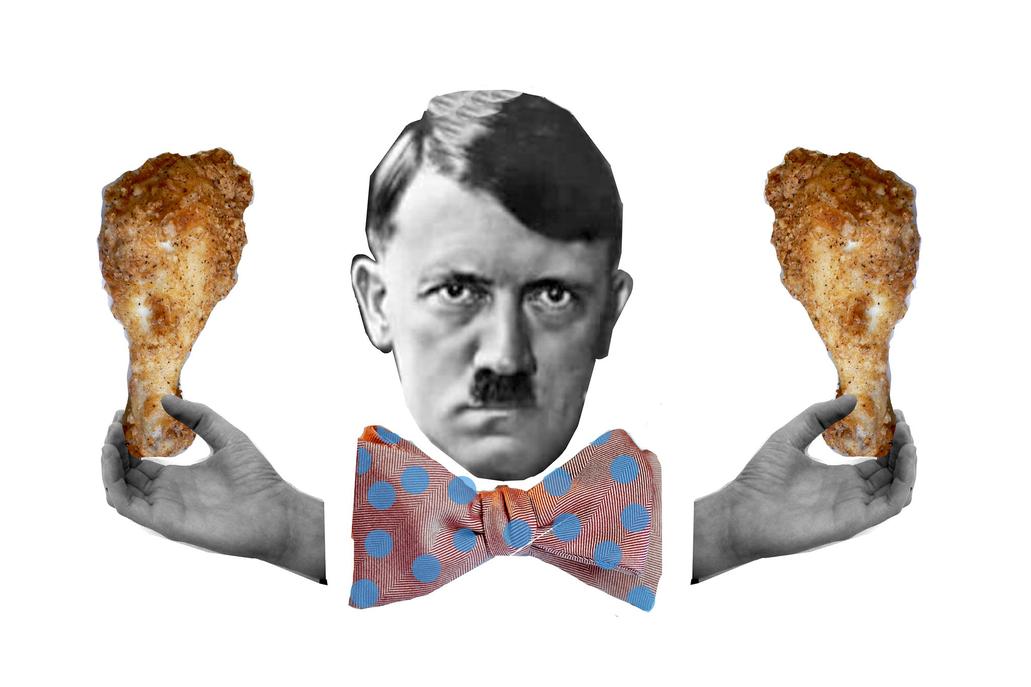
“Evil” is hard to measure. When you carefully evaluate intent, impact, documentation, ideology, and public awareness, Hitler’s unique and deliberate industrial murder of specific groups stands out as uniquely horrifying.
But Stalin’s regime caused immense suffering, too. The problem is in intent, directness, and the lasting public image. Hitler’s documented choices paint him as a man obsessed with deliberate exterminations, while Stalin appears as a ruthless dictator whose deadly policies often stemmed from paranoia and power preservation.
Practical Takeaways for Understanding History
- Look beyond numbers: Understand the motives behind atrocities, not just death tolls.
- Consider the role of documentation: Clear evidence shapes perception.
- Recognize ideological differences: Moral judgment ties to the nature of beliefs.
- Remember perspective: Geography and history shape collective memory.
In the end, both men personify terrible human darkness. Understanding why Hitler is often seen as worse helps us see not just the facts, but how history, politics, and media influence collective memory and moral judgment.
“History is written by the victors—and sometimes by the ones with better archives.”
Reflect on that next time you encounter discussions about these infamous leaders. The past is messy, but clarity helps us avoid repeating terrible mistakes. After all, knowing the nuances means no one gets off easy—but some crimes do tend to stand out more sharply than others.
